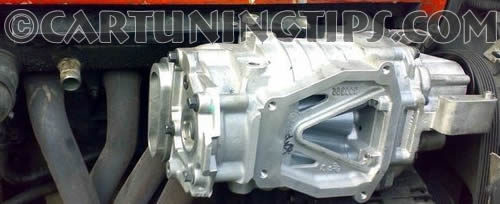The principle of a supercharger is getting compressed air into the engine. As the air is compressed it contains more oxygen and allows you to burn more fuel. It also helps the maximise the efficiency of your engine.
Converting a NASP engine to forced induction is usually easier with a supercharger due to the linear way they work and they require slightly less work to install than a turbocharger.
The supercharger is powered by a belt from the engine. Superchargers force air in at a constant rate in line with the engine speed. As engine speed decreases the intake flow matches this precisely. Because it is driven by a belt from the engine some power is lost as this needs to drive the compressors. This is more than made up for by the extra power on offer.
Superchargers work better than turbos as upgrades to a NASP engine because the power increase is linear in ratio with the engine speed. Turbos are more progressive giving larger boost gains as the RPM increases. Superchargers deliver power throughout the rev range so although it will not typically peak as high as a turbo you will benefit from little to no lag at low rpm and they are easier to map than turbos.
The biggest problem with aftermarket superchargers is siting them in the engine, they will need to be driven from the crank or a pulley driven by the crank. On cars with air-conditioning you could remove the airconditioning compressor and replace this with a supercharger, alternatively a double pulley could be fitting allowing a belt to drive the supercharger.
To get extra space you may need to relocate the battery to the rear of the car, or move some components around.
When fitting a supercharger you will need to get the engine timing and fuelling adjusted depending on your boost level. It is surprising how much more fuel you need to run to match the extra air coming into the engine but as the engine is more efficient it needn't be less economical when driven carefully.
There are a number of combined supercharger and turbo conversion kits around. The VW twincharger is a case in point. These are designed to give the benefits of each system and a relatively small engine, like a 1.4 is able to produce the power of an engine 2 times its size. The engine, being smaller is lighter and there are performance benefits all round.
We see people fitting superchargers to turbo engines to gain an exponentially larger boost without having to fit a lag prone large turbo.

